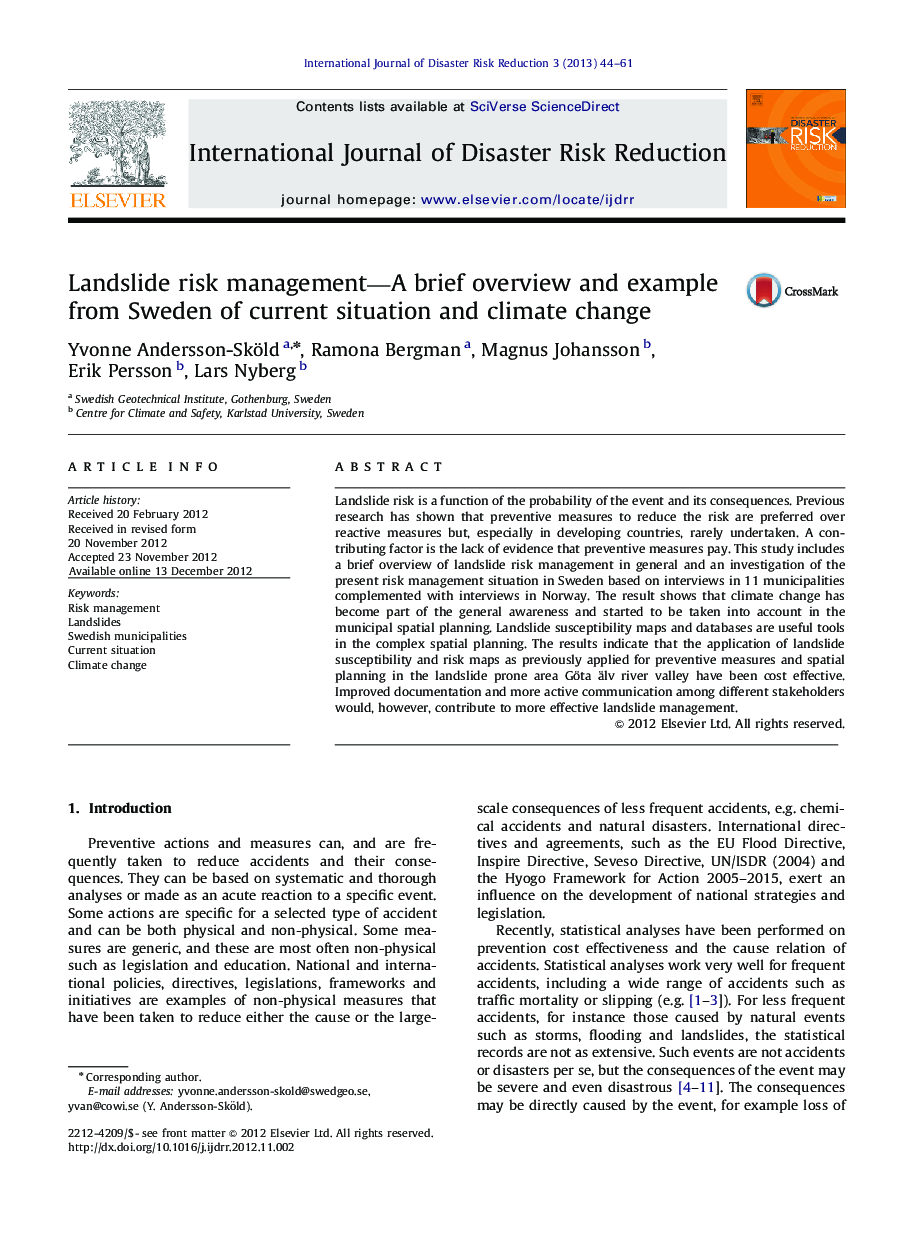| Article ID | Journal | Published Year | Pages | File Type |
|---|---|---|---|---|
| 7473868 | International Journal of Disaster Risk Reduction | 2013 | 18 Pages |
Abstract
Landslide risk is a function of the probability of the event and its consequences. Previous research has shown that preventive measures to reduce the risk are preferred over reactive measures but, especially in developing countries, rarely undertaken. A contributing factor is the lack of evidence that preventive measures pay. This study includes a brief overview of landslide risk management in general and an investigation of the present risk management situation in Sweden based on interviews in 11 municipalities complemented with interviews in Norway. The result shows that climate change has become part of the general awareness and started to be taken into account in the municipal spatial planning. Landslide susceptibility maps and databases are useful tools in the complex spatial planning. The results indicate that the application of landslide susceptibility and risk maps as previously applied for preventive measures and spatial planning in the landslide prone area Göta älv river valley have been cost effective. Improved documentation and more active communication among different stakeholders would, however, contribute to more effective landslide management.
Related Topics
Physical Sciences and Engineering
Earth and Planetary Sciences
Geophysics
Authors
Yvonne Andersson-Sköld, Ramona Bergman, Magnus Johansson, Erik Persson, Lars Nyberg,
